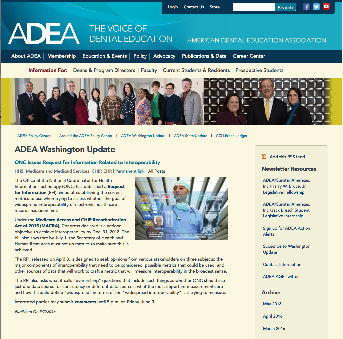- Created by Toni Magni, last modified by Toni Magni tops on 2021-11-17
open-ortho is the name of a project. The project's goal is to make the computer life of orthodontic providers easier.
Limited Content
What is available on this web site is only a small part of what we do. Unfortunately, due to agreements with some of the organizations we work with, we are not able to share all of our work. Please contact us at info@open-ortho.org to get an account.
There's a lot of great software and hardware to do a variety of different tasks in the orthodontic practice. Yet, more often than not, these systems don't know how to talk to one another. Orthodontists and other orthodontic providers struggle unnecessarily to move their data around between different software applications.
Doctors, vendors and engineers are working together at PANIO to allow orthodontic systems to seamlessly communicate with each other:
- We are interacting with various organizations, like the American Dental Association (ADA), DICOM, Health Level 7 (HL7), American Association of Orthodontists (AAO), Integrating the Healthcare Enterprise (IHE), JCEG Joint Cephalometrics Experts Group.
- We are defining, correcting, documenting and implementing existing informatics standards, to make them work for the orthodontic community.
- We want the existence of an approved way of communicating orthodontic data. Something that developers can use to make their software or hardware work with software and hardware of other developers.

Dentacoin is the first Blockchain based informatics system to make its way into the dental community. Is it actually useful?

Meltdown and Sepctre are a codename for various vulnerabilities of basically every Intel processor, which allows a malicious attacker to gain unrestricted access to the computer's memory, so every copy/paste command, every keyboard stroke, etc.
Everyone is concerned about passwords, and medical data might be even worse!In case you still have not understood how much of a game changing technology blockchains can be, this article from the World Government Summit gives a pretty good picture.
why is this article cool?
It's super cool, because humanity now has a way to solve the big messy global transition from paper to electronics in an interoperable, functional and scalable way! And this article will give you example of exactly how this can become true and how game changing it will be from a technical, medical and governmental perspective.
- Vendors: those who develop the systems that providers use to collect and store clinical data retrieved from patients.
- Providers: the doctors who provide medical care also by collecting and storing patient's data in systems developed by the vendors.
- Patients.
 The Office of the National Coordinator for Health Information Technology (ONC) has published a Request for Information (RFI) aimed at establishing the correct metrics to use when trying to assess whether the goal of widespread interoperability of electronic health care records has been met.
The Office of the National Coordinator for Health Information Technology (ONC) has published a Request for Information (RFI) aimed at establishing the correct metrics to use when trying to assess whether the goal of widespread interoperability of electronic health care records has been met.why is this cool?
It's exciting, because this means the government is serious about actual real interoperability: they want to define a way to measure how well medical software can communicate with each other.

It's official: the AAO is now sponsoring the PANIO effort
- No labels